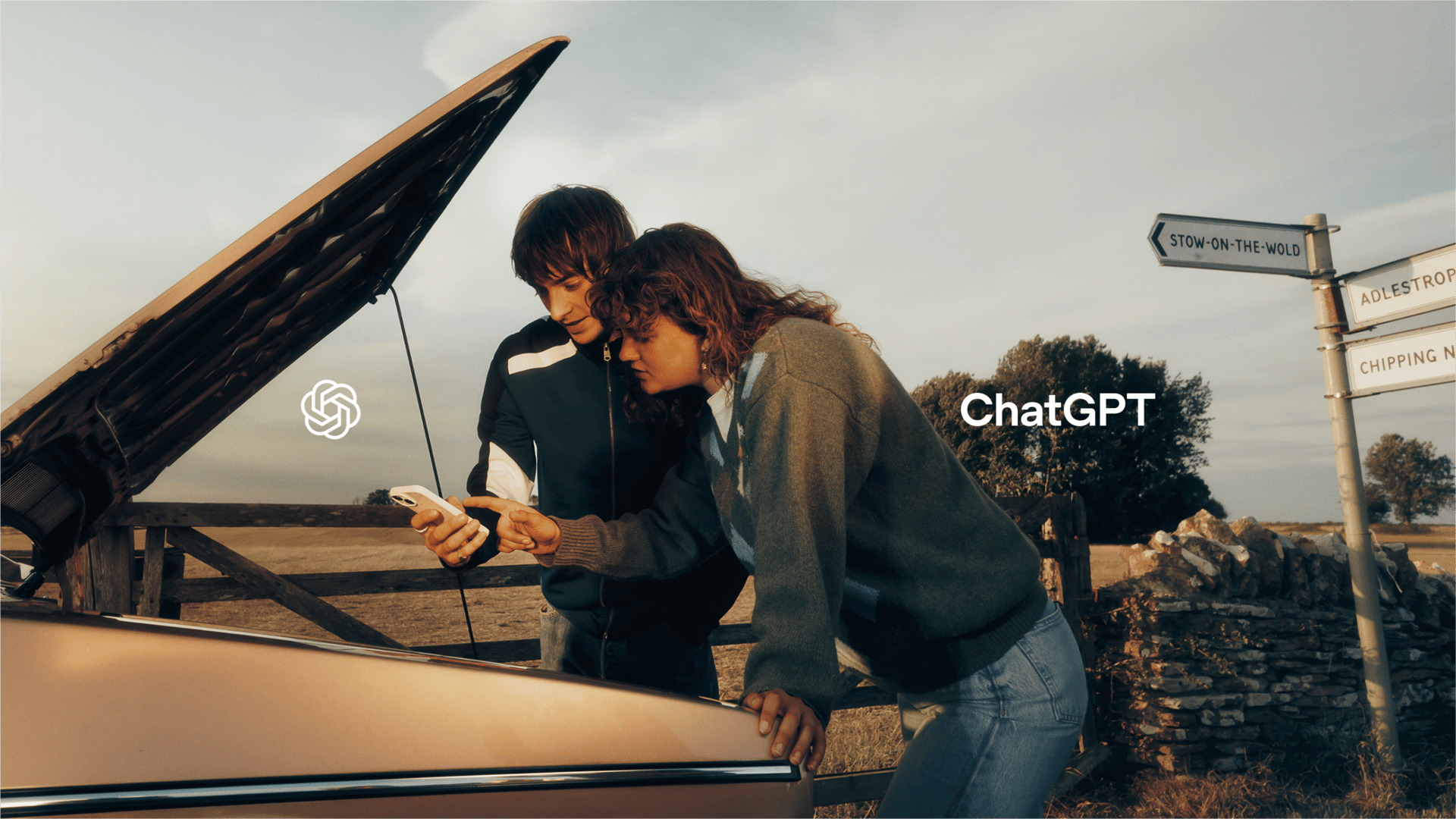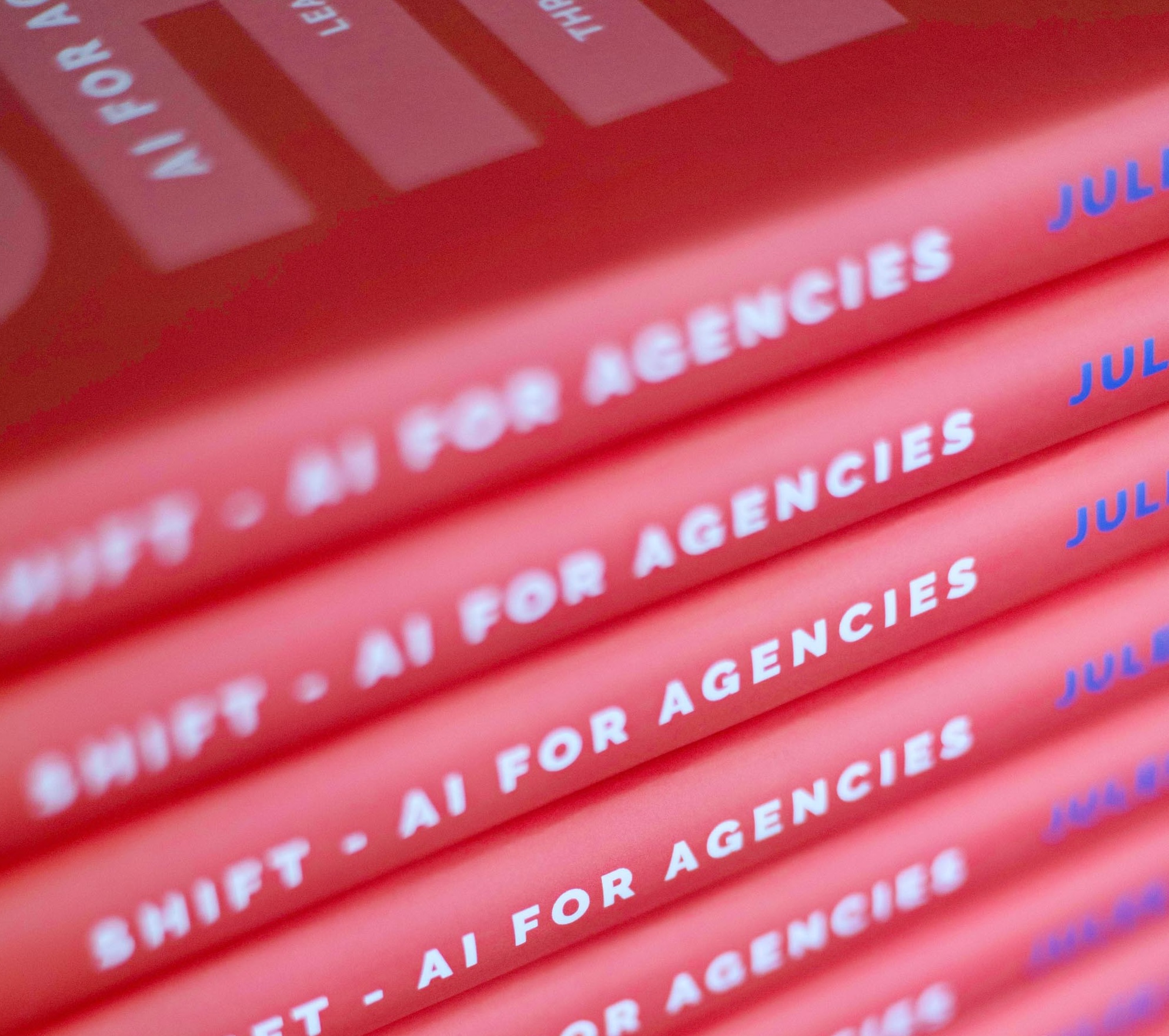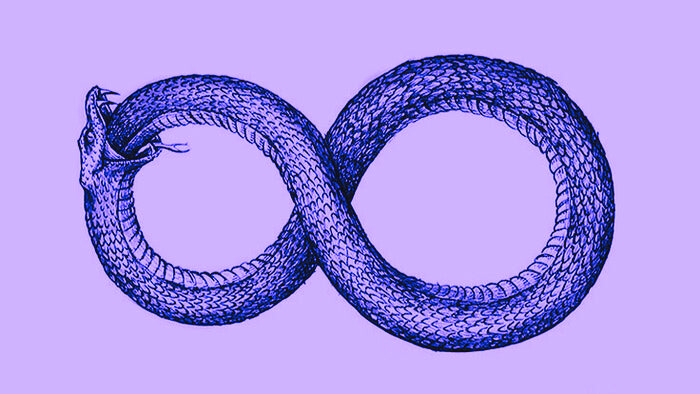Tech usually sells by pointing to the horizon. Its default grammar is spectacle: glossy demos, slick futurism, stadium-sized reveals. The stage doesn't get bigger than the Super Bowl where, earlier this year, OpenAI positioned ChatGPT alongside some of humanity's greatest inventions.
Within weeks of each other, OpenAI and Anthropic have debuted large-scale ad campaigns grounded in users' everyday rituals.
"We're watching the shift from share of shelf to share of self," says Alex Myers, founder of creative studio, Manifest. "If the product performs, that's table stakes. If the brand performs — socially, emotionally, culturally — that's where competition now lives."
The latest edition of INCITE, Manifest's quarterly cultural intelligence report, gives this shift a name: Radical Relevance. "In a radically relevant world," they write, "brands orbit their customer, not the other way around. If you're not emotionally aligned with your audience, you're not invited."
Capability is abundant. Trust isn't
Nowhere is that orbit harder to maintain than in AI. With OpenAI now valued at around $500 billion and Anthropic at $183 billion, the stakes couldn't be higher.
Yet the models are converging, and fast. They train on similar datasets, architectural innovations diffuse through research papers within weeks, benchmark performance narrows within months. Capability has collapsed into sameness.
The competitive advantage now lives in whether people trust the technology enough to let it in.
Trust means letting Claude see your half-formed ideas at 3am, or letting ChatGPT co-author the meal that could make or break a first impression. Unlike a bad meal, which is a lost evening, bad AI feels like lost autonomy.
The technology asks for access to your words, your process, your thinking and offers no window into what it does with them. That's why reassurance can't just prove competence. It has to prove it's on your side.
"Competing on trust means brands aren't just proving product claims. They're embedding themselves into cultural conversations where trust lives," Myers explains.
Both campaigns have launched when competitors are rapidly homogenising, regulatory scrutiny is intensifying and novelty is wearing off. The window to establish emotional legitimacy before sameness sets in is narrow.
How it manifests
OpenAI's work with Isle of Any trades futurism for 35mm film. Three spots depict ChatGPT as a quiet supporting character in everyday rituals: cooking dinner for a date, planning a sibling road trip, hitting a fitness goal.
The intimate 35mm cinematography captures warm, golden-hour lighting as a nervous cook prepares dinner, fingers tensely chopping vegetables while ChatGPT quietly suggests recipe modifications.
Shooting on 35mm is expensive, slow — and intentional. It signals that the AI lab moves at human speed, because it embodies human values.
"Connecting with people on a human level is at the heart of what makes this work so meaningful," says Michael Tabtabai, OpenAI's VP of creative.
The date-night cooking scene isn't selling features. It's mirroring the anxiety of wanting to impress someone. That's the micro-moment of recognition: the product disappears, the feeling remains.

Anthropic's "Keep Thinking" platform, created with Mother, speaks to "the people up at 3am because they can't let go of an idea." Out-of-home placements feature actual Anthropic researchers Kamal Ndousse and Grace Han, plus Poetry Camera creators who built viral products with Claude without coding experience. The candid, unpolished portraits against bold typography feel more like indie album art than tech marketing. Media spans live sports, top streaming platforms including Netflix and Hulu, and marquee out-of-home sites.
"Claude is for those who see AI not as a shortcut, but as a thinking partner," says Andrew Stirk, head of brand marketing at Anthropic.
Both campaigns deploy premium placements — primetime TV, Piccadilly Lights, Times Square — not merely for reach, but borrowed legitimacy. When people don't know whether to trust the technology, appearing alongside Nike and Apple suggests "other gatekeepers have already vetted us." When the technology itself is invisible, the media environment becomes proof of substance.
Cultural velocity over quarterly plans
These technology companies understand that cultural responsiveness directly impacts survival. While technology becomes replicated within months, the relationship with users remains the only durable competitive advantage.
"Tone without tempo is theatre," Myers warns. He describes measuring ROI not in transactions but in cultural velocity: the speed from insight to creative expression to market.
In the food and drink category — which Manifest's report explores — slow cultural response might cost you a trend cycle. In AI, it costs you legitimacy before competitors catch up and render your differentiation obsolete.
"Brands operating in this way are recruiting customers, rather than converting transactions," Myers explains. "They are seeking cultural significance and that's a mindset shift, which needs to be reflected in how they operate."
Manifest frames this as the moment "community becomes cult" — brands that decentralise influence, creating space for fans to become evangelists. They point to Liquid Death: water packaged like a metal brand, merch drops that outsell the product, cereal collabs staged for nostalgic chaos. The product becomes almost incidental. What matters is the ritual built around it.
This strategic understanding of cultural participation explains the choice of creative partners. Both AI companies selected agencies with proven track records in humanising complex, often mistrusted categories. Isle of Any had previously helped The New York Times build emotional resonance through its It's Your World to Understand campaign, while Mother has transformed utilitarian brands like Uber Eats and KFC UK into cultural participants rather than mere service providers.
"Smaller brands are native to intimacy," Myers explains. "They don't need to simulate closeness; they already live it." That's what the AI labs were buying: the ability to build intimacy at scale, to make mass-market technology feel personal.

And when cultural moments demand response — and in AI, they arrive weekly — both Mother and Isle of Any bring valuable cultural awareness that helps these campaigns remain relevant amid rapidly shifting perceptions.
These companies build technology that could automate creative work, yet they're investing millions in human partnerships.
The reason is structural: cultural significance requires judgment about what will resonate before it resonates — the kind of pattern recognition that comes from being embedded in culture, not trained on it. Automation scales execution. Only humans scale intuition.
The campaigns reveal something the product roadmaps don't: people don't want AI that thinks like them. They want AI that understands them. That's why the marketing focuses on empathy, not capability — and why it requires human partners to express it.
But Radical Relevance in AI faces a trap. A 2022 study found 91% of consumers prefer brands to be funny and 72% would choose a humorous brand over a competitor. Manifest's report frames this as a shift from aspiration to alignment: younger audiences aren't chasing brands that make them want to be better, but brands that feel as flawed, funny and hopeful as they already are.
Yet if every AI lab adopts the same self-deprecating tone, they're just building a new kind of homogeneity. "The danger is that humour becomes a uniform and we get loads of brands dad-dancing," Myers warns. Radical Relevance isn't about adopting a common tone. It's about mirroring an audience's specific emotional frequency.
The only sustainable moat
Myers points to Rhode as proof that Radical Relevance creates measurable equity beyond AI. The beauty brand's billion-dollar valuation was built on cultural fluency — "glazed donut skin" trends, TikTok-native drops, a creator ecosystem that felt like community — not distribution scale.
"The e.l.f. acquisition made clear that what investors were really buying wasn't just formulas in tubes, but the brand's ability to continually rhyme with its audience's dialogue, humour and rituals," Myers explains.
OpenAI and Anthropic hiring Mother and Isle of Any proves they understand this value. The campaigns demonstrate specificity of emotional frequency — warmth versus rigour, ritual versus workflow — without collapsing into generic good vibes.
In a category where capability commoditises overnight and trust is scarce, Radical Relevance isn't bought in a media plan.
Manifest frames this as the shift from attention economy to intention economy. "If your brand doesn't reverse its gaze outward to the audience," they write, "it might just lose them forever."
It's earned in every decision about who you build with, how fast they can move and whether they're mirroring your audience's specific emotional frequency.
Hold the tempo, and Radical Relevance becomes the moat. Lose it, and you're competing on price — and that's a race no $500 billion valuation survives.
Looking for a new agency? DCA cuts through the noise to connect brands with agencies that fit
- We cover all types of projects and disciplines, from strategy and creative to performance and tech.
- Our editorial team vets every agency, so you skip the pitch theatre and get straight to capable partners.
- We offer consultancy, pitch management, or a complimentary shortlisting service if that's all you need. Submit a brief today
Natasha Randhawa, newsletter editor.
.png)

.png)


.png)
.jpg)

